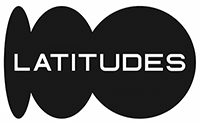Rushda
Store Review (0)PRESENTED BY : Warren Editions
| Frame | None |
|---|---|
| Edition Size | 8 |
| Medium | Photogravure on Zerkall Intaglio 250gsm |
| Location | Cape Town, South Africa |
| Height | 66.00 cm |
| Width | 54.00 cm |
| Artwork Height | 48 |
| Artwork Width | 39 |
| Artist | Strauss Louw |
| Year | 2022 |
Strauss Louw was born in 1992 in South Africa. In 2022, he completed a Master of Fine Arts from the University of Stellenbosch. He currently lives and works in Stellenbosch.
Group shows include The Phoenix Runway, presented at Whatiftheworld in Cape Town, South Africa, as well as Falling Awake at The FOURTH, both curated by RESERVOIR; and Hot House, curated by Jana Terblanche at Sixty Six in London, UK, in 2022; Emphatic Whispers at SMITH Studio, Cape Town and 2k.2 ‘Untitled’ at No End Contemporary in Johannesburg, South Africa, in 2019 and Close Encounters at SMITH Studio in 2018. His work has been included in group presentations at the RMB Turbine Art Fair in 2020 as well as Latitudes Online in 2021.
Also in 2021, Louw presented a small body of work titled Bitter-Sweet-Salt as part of his Master’s degree for the Artist Room programme at SMAC Gallery in Stellenbosch, South Africa. His first solo exhibition was Showing Skin at Whatiftheworld in Cape Town in August 2022.
Central to Louw’s work is experimentation with photographic processes, namely the 19th-century salt print and silver gelatin print. He regularly combines glass, cloth and imitation gold leaf with these processes to reconfigure the original image. “I like to say that I am a languid photographer,” says Louw. “What I mean to express is that I don’t actively seek to photograph but have adopted a languorous photographic methodology, a perpetual process of photographing on the fly, so to speak. I build an archive of images captured in response to my experiences through this process.”
For his print Louw used photogravure, the technique is both an intaglio and photomechanical technique. The technique combines the details of photography with densely pigmented intaglio inks. Using pigmented inks and acid-free pulp paper makes photogravure the most archival print technique. For photogravure, a continuous tone positive is exposed to light-sensitive pigmented gelatin tissue bonded to a rosin-coated copperplate. An aquatint is critical to this tone-based technique. After the gelatin is developed, the copperplate, with the image containing gelatin, is etched in baths of ferric chloride of different strengths. The etching commences with the extreme darks, moving through the tones to the lightest tone – pulling the etched copperplate from the ferric chloride once the bite reaches the extreme highlights. The technique accomplishes a full range of tones and attests to a high-quality original print.







